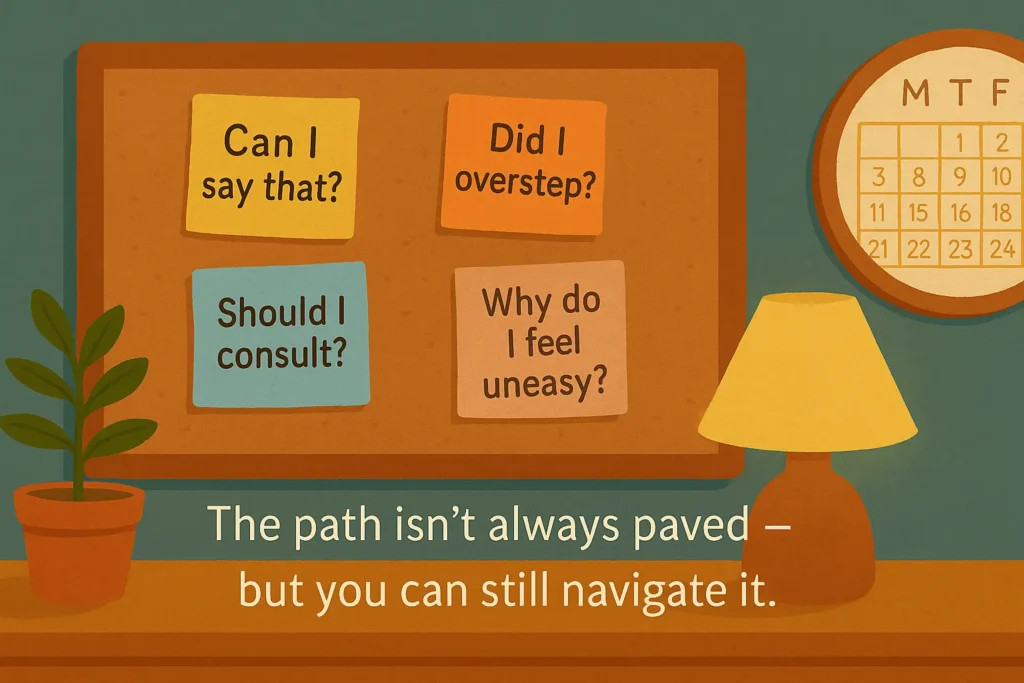As a mental health professional, there will be moments in therapy that challenge your skills and emotional resilience—those tough conversations where emotions run high and discomfort fills the room. Whether it’s addressing sensitive topics, facing client resistance, or managing emotional outbursts, these conversations can feel overwhelming. However, these moments often hold the potential for meaningful breakthroughs. The key to navigating them successfully lies in approaching them with empathy, patience, and a grounded presence.
Challenge 1: Emotional Reactions and Self-Regulation
Difficult client conversations can evoke strong emotional responses, both from the client and the therapist. It’s common for therapists to feel frustrated, anxious, or overwhelmed during these moments, which can affect the quality of the conversation and the overall therapeutic process.
Strategy: To manage these emotions, take a moment to pause and check in with yourself before engaging in the conversation. Practice grounding techniques such as deep breathing or mindful reflection to center yourself. This allows you to approach the conversation with clarity and composure, helping you stay present and emotionally regulated during tense moments.
Challenge 2: Client Resistance or Defensiveness
Clients may resist addressing difficult topics, either because they feel overwhelmed or because they are not ready to confront certain emotions. This resistance can manifest as defensiveness, avoidance, or even anger, making it harder to maintain an open and productive conversation.
Strategy: Instead of confronting resistance directly, lean into it with empathy and curiosity. Acknowledge your client’s feelings by saying something like, “I can sense this is a tough topic, and I understand why you might feel resistant to discuss it.” This shows that you respect their emotional process and opens the door for them to feel safe enough to explore their emotions at their own pace.
Challenge 3: Creating a Safe and Open Space
Difficult conversations can trigger feelings of vulnerability in clients, which might lead to them shutting down or becoming emotionally distant. It can be challenging to keep the conversation open when trust is fragile or when emotions are running high.
Strategy: To foster a safe space, begin by reaffirming your commitment to a non-judgmental, supportive environment. Use reassuring language such as, “Whatever you’re feeling is okay here, and I’m here to listen without judgment.” Be mindful of your body language, ensuring it reflects openness and empathy. This creates a sense of psychological safety that allows the client to feel supported and heard, even in difficult moments.
Challenge 4: Navigating Uncertainty in the Conversation
Sometimes, difficult conversations don’t follow a clear path, leaving both the therapist and the client unsure of how to proceed. This can feel frustrating, especially if there is pressure to “resolve” the issue in one session.
Strategy: Embrace the uncertainty. Remind yourself and your client that healing isn’t a linear process. Allow the conversation to evolve naturally, without trying to force a resolution. You can say something like, “It seems like we’re both sitting with a lot here, and that’s okay. We don’t need to have all the answers right now, but we can keep exploring this together.” This approach encourages your client to feel comfortable with the process, even if they don’t immediately have clarity or resolution.
Challenge 5: Managing Client Expectations for Immediate Solutions
Clients often come to therapy hoping for quick solutions to their problems, especially in difficult conversations. When those solutions aren’t immediately available, clients may feel discouraged or frustrated.
Strategy: Help clients shift their focus from instant solutions to the value of the therapeutic process itself. Acknowledge their desire for resolution and gently guide them towards understanding that therapy is about exploration, not quick fixes. You can say, “I understand you want answers, and it’s okay to want that. But sometimes, taking the time to process is just as important as finding the answer.” This helps manage expectations while reinforcing the importance of the therapeutic journey.
Challenge 6: Feeling Overwhelmed by the Weight of the Conversation
Difficult client conversations can feel heavy, and sometimes it may be emotionally taxing for the therapist as well. The weight of these conversations can sometimes create burnout or emotional exhaustion over time.
Strategy: Self-care is crucial for mental health professionals. After a particularly challenging conversation, take time to decompress and process your own feelings, whether through supervision, peer support, or personal reflection. Regular self-care routines, such as mindfulness, exercise, or hobbies, can help you maintain emotional resilience and prevent burnout. Remind yourself that you’re doing important work, but it’s essential to recharge in order to continue supporting others effectively.
Guiding Clients Through Discomfort with Confidence
Navigating difficult client conversations is an inevitable part of therapy, but it’s also an opportunity for deep connection and growth. By preparing yourself emotionally, creating a safe space, practicing active listening, and maintaining empathy, you can guide your clients through these challenging moments. And while not every tough conversation will lead to a clear resolution, by approaching them with patience and compassion, you’ll help your clients feel heard, understood, and supported throughout their journey.


